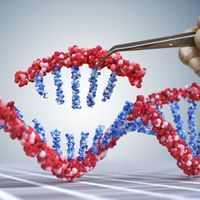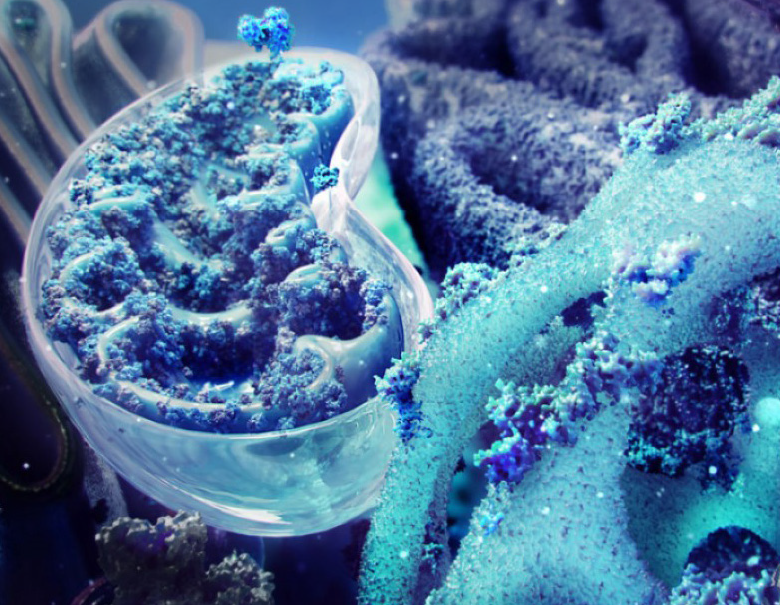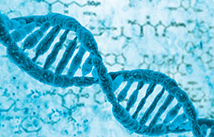
This unit provide with sufficient knowledge of modern bioethical research methods and skills to be able to make a reasoned and justified decision about which method is most appropriate with emphasis on ethical considerations and issues of confidentiality and sensitivity .
- Teacher: Dr. Thierry Habyarimana

This unit provides the student with knowledge
of the current
land advanced laboratory techniques used for isolation and identification of viruses from clinical specimens .
Learning outcomes
i.Apply the proper methods for viral investigation
ii.Perform direct examination, isolate and identify pathogenic viruses.
iii.Explain the clinical significance of diagnostic tests or results.
iv.Summarise the procedures used in diagnosis of virus infections in the laboratory
v.Critically appraise methods for diagnosis of virus

In this module you will examine the molecular themes underpinning the pathogenesis of microbial infection. You will examine the responses of microbes to external stimuli and understand the molecular mechanisms that modulate genetic regulation of virulence factors and microbial stress responses that ensure survival and infection in the host. The host response to microbial infection: innate and acquired immune response to infection; Invasion & colonisation of the host: molecular mechanisms of pathogenesis; Virulence factors involved in adhesion, invasion and colonisation; molecular structure and genetic regulation. Overcoming antimicrobial resistance: antibiotics/antivirals/antifungals and resistance; bacterial physiology and novel therapeutics.
Learning outcomes
i. Describe the mode of viral transmission,
ii. Explain
the concepts of viral pathogenesis,
iii. Analyze the dynamic interactions that take place between host and virus during the establishment of infection.
iv. Critically review and challenge scientific literature to develop analytical and communication skills.
Mdule 9: Cellular and Molecular Hematopathology
|
1. Module Code: HBT924 |
Faculty: Applied Fundamental Sciences (AFS) |
||
|
2. Module Title: Cellular and Molecular Hematopathology |
|||
|
3. Level: 9 Semester: 2 Credits: 30 (15: Cellular Hematopathology, 15: Molecular Hematopathology) |
|||
|
4. First Year of presentation: 2022/2023 Administering Faculty: AFS |
|||
|
5. Pre-requisite or co-requisite modules: General courses of semester 1 |
|||
|
6. Allocation of study and teaching hours: |
|||
|
Items |
Student learning hours |
Lecturer Teaching Hours |
|
|
Lectures |
100 |
200 |
|
|
Seminars/workshops |
25 |
10 |
|
|
Practical classes/laboratory |
40 |
40 |
|
|
Structured exercises |
30 |
20 |
|
|
Set reading etc. |
30 |
15 |
|
|
Self-directed study |
30 |
|
|
|
Assignment-preparation and writing |
30 |
|
|
|
Examination-revision and attendance |
10 |
|
|
|
Invigilation |
5 |
5 |
|
|
Marking |
|
10 |
|
|
Total |
300 |
300 |
|
6.1. Brief description of aims and content
Cellular and Molecular analysis is a critical component of hematopathology practice. This course will focus on the physiology and pathology of blood and its use as a diagnostic and therapeutic tool. A variety of areas of molecular and cellular bioscience will be covered with an emphasis on new technologies and developments in hematology and related disciplines such as Transfusion Science.
6.2. Learning outcomes
A. Knowledge and understanding
By the end of the course students will be able to demonstrate knowledge and to understand the following:
i) Recall the structure and function of the red blood cell, the synthesis of hemoglobin and the normal breakdown and recycling of components.
ii) Classify red blood cell disorders (anemias) and apply laboratory values in clinical decision making.
B. Cognitive/intellectual skills/application of knowledge
Having successfully completed the module, students should be able to:
iii) Describe the stages in red blood cell maturation from stem cell to maturity.
iv) Describe hematopoietic disorders
v) Develop ideas through the evaluation of appropriate literature, concepts and principles
C. Communication/ICT/Numeracy/Analytic Techniques/Practical skill
Having successfully completed the module, students should be able to:
vi) Demonstrate an understanding of the components of human blood and characteristics, functions, and abnormalities and disease states of each.
vii) Apply clinical laboratory and ancillary molecular diagnostic testing to develop a differential and a diagnosis of white blood cell disorders.
viii) Demonstrate effective communication and presentation skills
D. General transferable skills:
Having successfully completed the module, students should be able to demonstrate the following skills:
ix) Demonstrate progression in laboratory skills by effective organization, coordination of multiple tasks and insightful evaluation of results obtained.
x) Integrate patient clinical findings and laboratory results
xi) Correctly perform quality control and assurance procedures
7. Indicative content
Theory
Cellular Hematopathology
Introduction to cellular and molecular pathology of blood cells, Bone marrow structure, Constitutional hematopoietic disorders, Platelets and megakaryocytes, lymphocytes and plasma cells, stromal tissue and extracellular space. Clonal diseases: Acute myeloid leukaemia, Acute lymphoid leukaemia, myelodysplastic syndromes, myeloproliferative disorders, histiocytic neoplasms, B-cell neoplasms, Hodgkin lymphoma, Plasma cell neoplasms, T-cell neoplasms, Natural Killer cell neoplasms, Non-hematolymphoid neoplasms. Immunodeficiency disorders.
Molecular Hematopathology
Specimen triage, interpretation NGS testing of myeloid neoplasms, and interpretation of clonality studies, karyotyping, molecular cytogenetics, and FISH, Molecular diagnostic techniques in hematology: DNA, RNA, and Protein analysis, Emerging technologies in blood group typing: SNP chips, DNA, arrays, high throughput PCR.
Practicals
Detection of BCR-ABL1 fusion genes in chronic myeloid leukaemia, Detection of JAK2 mutations in myeloproliferative neoplasms (Polycythaemia vera, Essential thrombocythemia and Primary myelofibrosis), Detection of PML-RARA in Acute Promyelocytic Leukaemias and Hemoglobin electrophoresis (Hb A, HbA2, HbF and HbS). Testing of cancer makers using flow cytometry.
8. Learning and Teaching Strategy
Basic factual material is discussed in lectures and seminars, and practical skills are acquired and practiced in the laboratory. Face-to-face interaction, Presentation, Group work and Assignment/individual research shall all be used. Students will be expected to undertake directed learning following each lecture to complement the taught topics and independent learning is required to reinforce the student's knowledge, e.g. in relation to coursework assignments and the final examination. Find strategies that can promote gender equality (For example a special attention to females, encourage them to feel free during presentation, etc.).
9. Assessment Strategy
Formative assessment is by means of regular tutorial exercises. Feedback to students on their performance, professional behaviour, solutions and their progress towards learning outcomes is provided during lectures and tutorial classes. The summative assessment consists of two major methodologies:
Problem Based Learning Projects, Case-studies, professional group assignments and internships where students demonstrate their ability to solve problems in the professional environment.
The written examination at the end of a module. This gives students the opportunity to demonstrate their overall achievement of learning outcomes. It also allows them to give evidence of the higher levels of knowledge and understanding.
Two assessments will be organized: in course assessment (CAT+ self-directed works) which will count for 60% and a final exam which will count for 40%.
10. Assessment Pattern
|
Component |
Weighting (%) |
Learning objectives covered |
|
In-course assessment(Assignment +tests) |
60 |
i-viii |
|
Exam |
40 |
i-xi |
11. Strategy for feedback and student support during module
Examples, assignments, exercises and problems allow student to monitor their progress and staff to appreciate progress throughout the duration of the module.
The feedback on formative assessments provided in time help the students to recognize their strengths and errors, for improvement of their performances.
12. Indicative Resources
1. Naeim, F., Nagesh Rao, P. and Grody, W. W. 2008. Hematopathology: Morphology, Immunophenotype, Cytogenetics, and Molecular Approaches. 1st Edition. Academic Press. ISBN-10: 0123706076. ISBN-13: 978-0123706072
2. Foucar, K. Reichard, K. and Czuchlewski, D. 2010. Bone Marrow Pathology. 3rd Edition. American Society for Clinical Pathology. ISBN-10: 089189568X. ISBN-13: 978-0891895688.
3. Knowles, D. M. (2001). Neoplastic Hematopathology. Second edition. Lippincott Williams & Wilkins. ISBN-10: 0683302469. ISBN-13: 978-0683302462
4. Howard, Martin R, Hamilton, Peter J, Britton, Robert. (2017). Hematology : an illustrated colour text
5. Harmening, D. M. (Editor). 2005. Modern Blood Banking and Transfusion Practices. 5th edition. F. A. Davis Company. ISBN-10: 0803612486. ISBN-13: 978-0803612488.
6. Hillyer, C. D., Silberstein, L. E., Ness, P. M., Anderson, K. C. and Roback, J. D. 2006. Blood Banking and Transfusion Medicine: Basic Principles and Practice. 2nd edition. Churchill Livingstone. ISBN-10: 0443069816. ISBN-13: 978-0443069819
Electronic books
1. Nader Rifai (2018). Principles and Applications of Molecular Diagnostics. Elsevier Science
2. William B Coleman (2016). Diagnostic Molecular Pathology : A Guide to Applied Molecular Testing
- Teacher: Samson OYEBADEJO

Cellular and Molecular analysis is a critical component of hematopathology practice. The primary focus of Molecular Hematology is the cellular and molecular mechanisms involved in the on the on the physiology and pathology of blood and the use of novel approaches for diagnosis and targeted therapy. Specific techniques will be discussed including Molecular diagnostic techniques in hematology: DNA, RNA, and Protein analysis, Emerging technologies in blood group typing: SNP chips, DNA, arrays, high throughput PCR.
